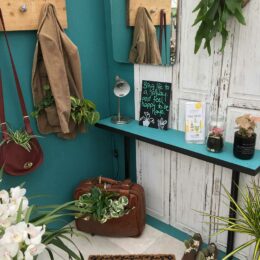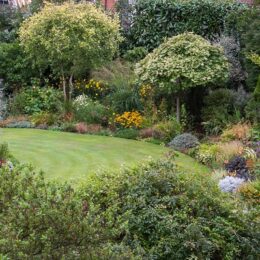After the excitement and commotion of Christmas, January can seem quite miserable and anticlimactic. Now that Christmas decorations have been packed away our houses can suddenly look a little bare and in need of a lift.
House plants are the perfect antidote to the winter blues. Not only will they brighten up the house on the dreariest of winter days, they will purify the air and improve your mood and health!
House plants are all about instant results and a good starting point is to choose a foliage plant that will provide year round interest.

Dracaena ”Madagascar Dragon Tree”
Reliable foliage favourites include Asparagus Ferns, Spider Plants (Chlorophytum), Dracaena, Ficus and Palms.

Ficus elastica ”Rubber Plant”
Flowers can be added in for blasts of colour and to provide seasonal interest. Current favourites for January include Kalanchoe, Begonias, Christmas cactus, and miniature roses.

Flowers of the Kalanchoe plant add blasts of colour in winter!
Caring for house plants isn’t as complicated or as difficult as some people may assume. Half the secret to success is realising that like outdoor plants, house plants have different growing conditions. One plant won’t suit every home so it is important that you purchase the right plant for the environment you can provide.
The basic requirements for all plants are light, humidity, water, warmth and food. Getting the balance between them right is the key to consistent success.
Before you purchase your house plant it is advisable that you decide on its ultimate position in your home. Plants cannot survive without light. Without light a plant is unable to photosynthesise and will quickly die. As a general rule all houseplants prefer a bright filtered light. Light levels decrease rapidly as plants are placed further back from the window but if other growing conditions are right, many plants can adapt to less than perfect light levels. Ideal house plants for lower light levels include Aspidistra, Dieffenbachia, Peace-Lily (Spathiphyllum) and Snake plants (Sansevieria).

Spathiphyllum ”Peace-Lily”
Selecting the right house plant should also reflect the space you have available. You may wish to fill your home with larger plants but if you have a smaller home this may be impractical. Opting for smaller pot plants may be easier to maintain and more suitable.

Sansevieria ”Snake Plant’
Almost all houseplants originate from tropical and sub-tropical countries where temperatures are considerably and consistently warmer than here in the UK. Most houseplants will happily thrive at steady room temperatures of 15-24°c. During winter you may have to move your houseplants to a more suitable position to avoid large fluctuations in temperature caused by central heating and cold nights. You should avoid placing plants near open fires, radiators, in draughts, or on windowsills on frosty nights. Radiators can cause the air in a room to become very dry. Tropical plants require a humid atmosphere so may have to mist your plants to maintain the right humidity.
Incorrect watering is responsible for more houseplant deaths than anything else. It is often assumed that all houseplants need lots of water every day but this is rarely the case. As many houseplants originate from hot, arid countries they can often have minimal watering requirements. Too much water poured regularly into the compost can cause plant roots to suffocate and rot. Too little water and your plants roots will wither away and your plant will wilt away. The basic rule of watering is to do so when the soil is starting to dry out and to ensure that excess water is drained away to prevent waterlogging. The frequency of watering will vary throughout the year, depending on the season and the plant’s growing conditions. Succulents and cacti can last weeks without watering whereas indoor Azaleas prefer to have consistently moist compost.
Like all living things, plants need to be fed regularly when actively growing. For most plants this will be from March to September. Until then allow your plant to sit and rest. Specialist feeds are available for certain groups of plants such as citrus and orchids, but for a balanced feed Baby Bio is a popular choice.








